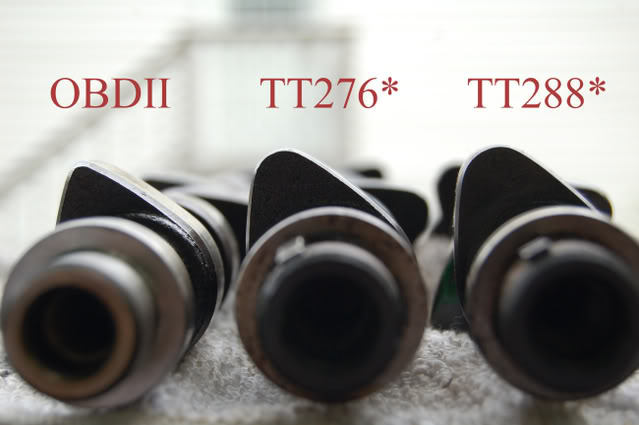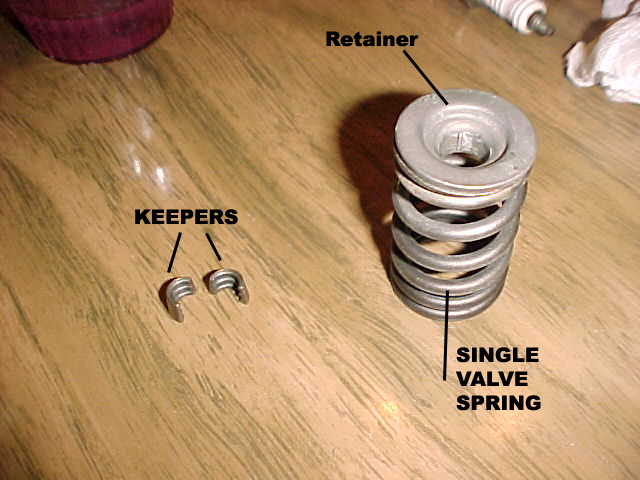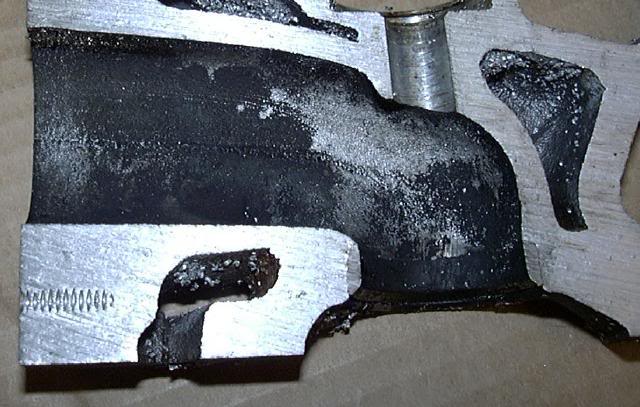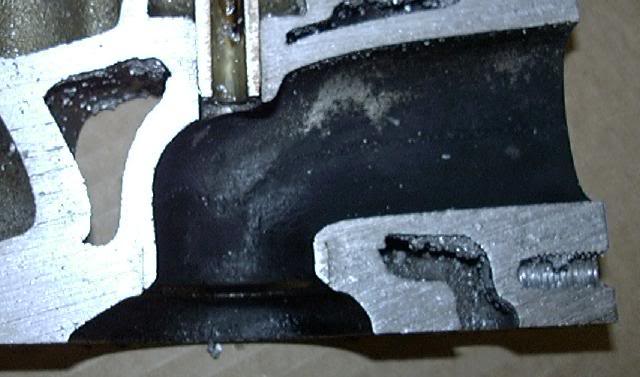You must be logged in to rate content!
6 minute read
OBDI vs OBDII ABA Engines
Compliments of tdogg74 @ vwvortex.com
6-6-2008
The difference in the top end is as follows.
Throttle body:
-OBDI had a dashpot while OBDII does not.
-OBDI has the external ISV (idle stabilization valve)
-OBDII has the TPS (throttle position switch) integrated eliminating the dashpot and ISV.
-OBDII has a different throttle bore shape than OBDI to increase air velocity at lower rpms.
Intake manifold:
-OBDI has the external ISV attached to the exterior of the upper manifold.
-OBDII has vanes immediately forward of where the individual ports begin in the upper manfold. Lower manfilds are identical for both OBDI & II.
Camshafts profiles:
OBDI camshaft measured @ .050"
Advertised Duration: Unknown
Duration @ .050": 211*/212*
Valve Lift: .400"
Lift @ TDC: Unknown
Centerlines: 113.2* / 113.8*
Lobe Center: 113.5*
Valve Timing: -7.7/38.7 - 39.8/-7.8
Valve Overlap: -15.5*
OBDII camshaft measured @ .050"
Advertised Duration: Unknown
Duration @ .050": 210*/210*
Valve Lift: .417"
Lift @ TDC: Unknown
Centerlines: 110.8* / 109.2*
Lobe Center: 110*
Valve Timing: -5.8/35.8 - 34.2/-4.2
Valve Overlap: -10*
Pic of OBDII stock cam next to a Techtonics 276* & Techtonics 288* camshaft:
Valve springs:
-OBDI came stock with dual valve springs capable of lifts of .450" of lift.
-OBDII came stock with single valve springs capable of lifts up to .432".
- And a link to why you need to upgrade with high lift cams over .432" http://forums.vwvortex.com/zerothread?id=4696004
OBDII valve spring assembly:
Heads
-OBDI & ODBIII heads are interchangable.
-OBDI had provisions for EGR (exhast gas recirculation)
-OBDII heads had SAI (secondary air injection) attached to the exhaust manifold
-Stock OBDI intake ports flow better than OBDII.
-OBDII intake ports were designed with shrouds immediately before the valve guide. This was to reduce intake noise and redirect the A/F mix to the top of the piston for increased efficiency. These shrouds became a hinderance at high rpms.
-It is important to note that during the 1995.5 and 1996.5 model years, there was sometimes a mix and match of parts. Some cars came with OBDII heads with OBDI valvetrain parts, ect. There is a ghost head out there. It's the OBDII "German" head. It has large OBDI ports, single valve springs, no spring seats, and smaller JH sized spring seat bores. If you see a head that has "germany" stamped on the back and single valve springs, please IM me, as I've had a lot of experience with these heads and can save you a lot of headaches when it comes to modifying them.
Here is a pic of a (ported) OBDI next to a stock OBDII intake port:
Here are cut-away shots of an ABA head:



The difference in the bottom end is as follows:
There are only 2 different blocks that the ABA could have... squirter or non-squirter. There is only one way to know exactly what's in there, and that's to take the oil pan off and LOOK.
Generally speaking, squirter blocks are the way to go if you're building a performance engine, however, I've used both for pretty intense buildups and I can't say I've noticed a difference.
There are a variety of internal combinations that you may find as well, but let me preface it with a couple ABA LAWS.
All ABA's have forged rods
All ABA's have cast pistons
All ABA internals are interchangable
That said, lets get down to the whole OBDI vs OBDII debate.
The general rules are...
OBDI - forged crank
OBDII - cast crank
But, knowing VW, there is a lot of gray in the middle. The only ones i can say for sure I've never seen deviate from the rule are 93-94 OBDI and 98-99 OBDII. Everything in the middle is hit and miss. Forged cranks are stronger than cast, but the power yeild difference is much lower than people think, only about 35-50lb/ft.
The earliest ABA's also tend to have a full metal windage tray that forms the oil pan gasket, later ones had a little splash guard that snaps onto the oil pickup, the full metal tray is perfered.
There are also 3 difference sets of pistons you may find. They are also hit and miss, so the only way to tell for sure is to at least inspect them through the spark plug holes or remove the head. There is a smooth dish piston. These are generally OBDI "German" blocks, but they also made their way into later "mexican" and "brazilian" blocks. The later OBDII engines had what I call castle pistons. They look similar to the smooth dish, but have little castles that stick up on the front and back and also have a deeper dish. I assume the reason is to better direct the combustion downward but narrowing the combustion chamber at TDC. There are a handful of the elusive "unicorn" pistons out there as well. I have a set that I pulled from a "brazilian" block and they are a mix of the other two but slightly a-symetrical like a VR piston. Not sure what the reasoning was for them, but they clear a 16V head rather nicely.
Of the 3 pistons, for an ABA, I can't see either of the common ones making any difference, but I go with the smooth dish for because they seem to offer slightly more clearance for a large cam and decked head with large cam lift. For an ABA/16V build, the rare ones or the smooth are the more ideal.